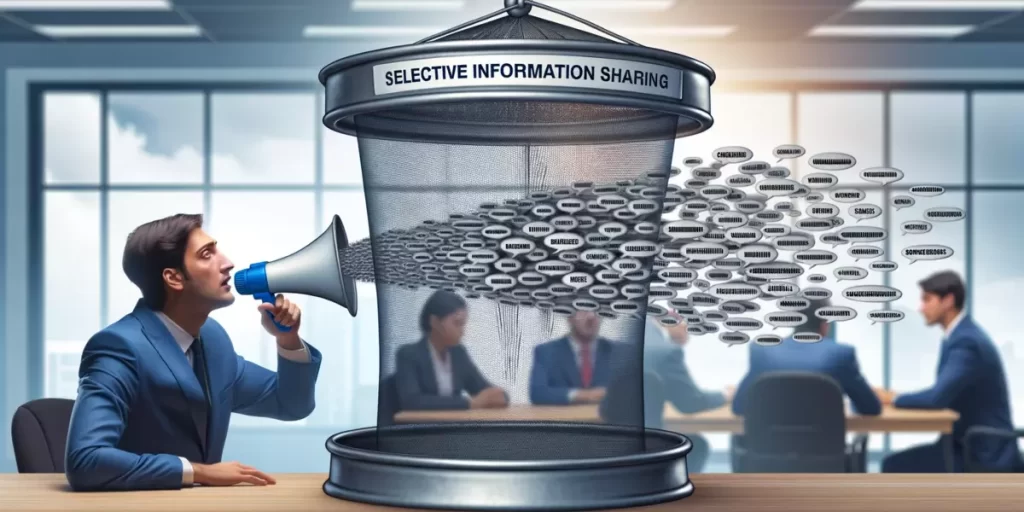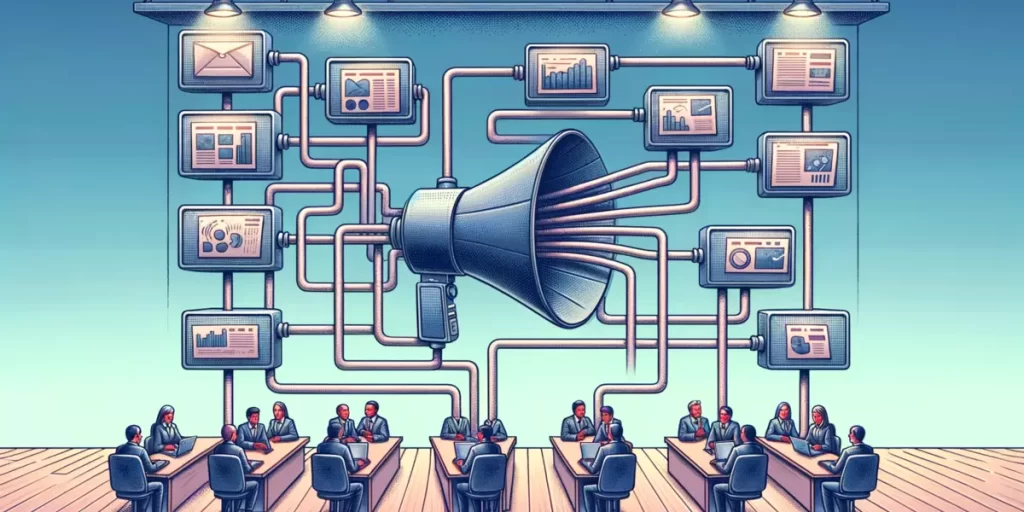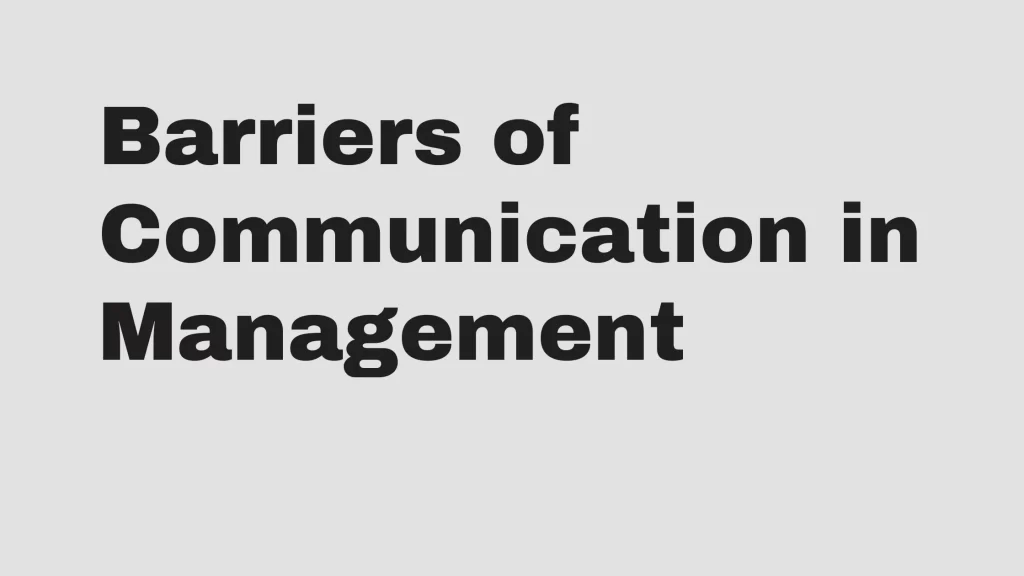In today’s connected world, communication has become more important than ever. Yet, there are still barriers that can impede the flow of information. One such barrier is known as the filtering barrier to communication, where communication filters affect how messages are interpreted and delivered. Filtering barriers can arise from cultural norms, emotions, assumptions, and unconscious biases. They can lead to misunderstandings between people or even distort the original meaning of a message.
Contents
- 1 What is Filtering in Communication
- 2 How Is Filtering a Barrier to Communication?
- 3 How to Avoid Filtering Acting As a Barrier In Communication?
- 4 Why is filtering communication important?
- 5 How can filter improve communication?
- 6 What are the Five Types of Filtering in Communication?
- 7 Example of Filtering in Communication
- 8 How to Overcome Filtering Barriers in Communication
What is Filtering in Communication
Filtering in communication refers to the process where information is held back, distorted, or presented in a selective way before it is communicated to others. This can happen for a variety of reasons and can occur at any point in the communication process.
Filtering can have negative consequences, such as creating miscommunications, breeding mistrust, or leading to poor decision-making due to a lack of information. In organizational settings, excessive filtering can hinder transparency and accountability. Effective communicators are aware of these filters and strive to minimize them to ensure clear and accurate transfer of information.
How Is Filtering a Barrier to Communication?
Filtering is a barrier to communication because it involves purposely withholding or altering information before it is passed on to the receiver. This can occur when the sender, such as a manager or leader, decides to edit or “water down” a message to avoid upsetting the receiver or to maintain employee morale.
By doing so, important details may be left out, or the message may be distorted, leading to misinterpretations and misunderstandings. The receiver may not be able to comprehend the intended message fully or may think that the sender is concealing something.

Filtering can also affect the trust and credibility of the sender, leading to further barriers in communication in the future. Overall, filtering can impede effective communication and hinder successful outcomes.
How to Avoid Filtering Acting As a Barrier In Communication?
Filtering is a common barrier to effective communication that occurs when individuals alter or withhold information before delivering it to the receiver. It results in the receiver receiving an entirely wrong message and may misinterpret it. To avoid filtering acting as a barrier in communication, it is essential to ensure that messages are based on facts and are not distorted in any way.
Encouraging upward communication and creating an open and transparent environment can also help. The sender should communicate the message clearly and precisely to avoid any confusion. It is essential to be truthful and open about the information being conveyed so that the receiver can make informed decisions. By following these principles, effective communication can be achieved, and filtering will no longer be a barrier to communication.
Why is filtering communication important?
Filtering communication refers to the process of sorting through information and only presenting the most relevant or important details. Filtering is essential in today’s fast-paced world, where we are constantly bombarded with a never-ending stream of data from multiple sources. We can save time and energy by filtering out irrelevant information and focusing on what matters.
Filtering communication is essential in business settings because it helps us avoid misunderstandings and misinterpretations. When we communicate with others, whether via email, phone, or face-to-face interactions, there is often a lot of noise that can cloud our messages. By filtering out unnecessary details and focusing on the key points, we can ensure our message is clear and concise.

Moreover, filtering communication allows us to tailor our message to our audience.
How can filter improve communication?
Filtering can improve communication in several ways:
Clarity
By filtering out irrelevant or unnecessary information, communication becomes more precise and easier to understand. This can help to avoid confusion and misunderstandings.
Efficiency
Filtering can streamline communication by focusing on essential information. This can save time and reduce the back-and-forth required to convey a message.
Relevance
Filtering ensures that communication is relevant to the intended audience. By tailoring the message to the recipient’s interests and needs, communication becomes more effective and meaningful.
Tone
Filtering ensures that the tone of communication is appropriate for the situation. By removing language or information perceived as offensive or inappropriate, communication can be more respectful and professional.
Overall, filtering can make communication more effective, efficient, and meaningful. It helps ensure that the right message is conveyed to the right audience clearly and appropriately.
What are the Five Types of Filtering in Communication?
There are several types of filtering in communication, but here are five common ones:
Selective attention
This type of filtering occurs when a person focuses only on certain aspects of a message while ignoring others. For example, a person may only hear the negative parts of a performance review while ignoring the positive feedback.
Selective perception
This type of filtering occurs when a person interprets a message based on their beliefs and values. For example, two people may interpret a political speech differently based on their political affiliations.
Selective exposure
This type of filtering occurs when a person seeks out information that confirms their beliefs while ignoring information that contradicts them. For example, a person who supports a particular political candidate may only watch news programs that are favorable to that candidate.
Selective retention
This type of filtering occurs when a person remembers only certain parts of a message while forgetting others. For example, a person may remember the details of a movie plot but need to remember the characters’ names.
Semantic noise filtering
This type of filtering occurs when a person has difficulty understanding a message because of language or cultural differences. For example, someone who speaks English as a second language may need help understanding idiomatic expressions common in American English.

Example of Filtering in Communication
Filtering communication barriers occur when a sender intentionally or unintentionally modifies the information they transmit to either enhance the message or downplay it. For instance, a manager may present a report to their superiors highlighting their department’s positive accomplishments while leaving out information about their failures or problems.
Another example of filtering occurs when employees selectively share information with their colleagues or superiors to control how others perceive or evaluate their actions. These actions can affect the accuracy and honesty of information shared, resulting in misunderstandings, distrust, and reduced productivity. Filtering can be overcome by establishing clear communication procedures and values that promote openness, honesty, and transparency. By reducing filtering barriers, individuals and organizations can improve communication effectiveness and build stronger relationships.
How to Overcome Filtering Barriers in Communication
Overcoming filtering barriers in communication can be challenging, but here are some strategies that can help:
Be aware of the filtering.
The first step in overcoming filtering barriers is knowing they exist. By recognizing that selective attention, perception, exposure, and retention, as well as semantic noise, can affect communication, you can take steps to address them.
Use clear language
To overcome semantic noise filtering, use clear and concise language that is easy to understand. Avoid using jargon, idioms, or complex vocabulary that may be unfamiliar to the listener.
Be open-minded
To overcome selective perception and exposure filtering, be open-minded and try to see things from the other person’s perspective. This can help you to understand their beliefs and values and to communicate in a way that resonates with them.
Provide context
To overcome selective attention and retention filtering, provide context for your message. Please explain why the information is essential and how it relates to the listener’s interests or needs. This helps capture their attention and increase their retention of the message.
Confirm understanding
To overcome any filtering, confirm that the listener understands the message. Ask them to repeat what they heard or paraphrase the message in their own words. This helps ensure that the message is received and understood as intended.
By using these strategies, you can help overcome communication filtering barriers and increase your messages’ effectiveness.
Boko Ducky has over 10 years of experience in helping individuals and organizations improve their communication skills.



